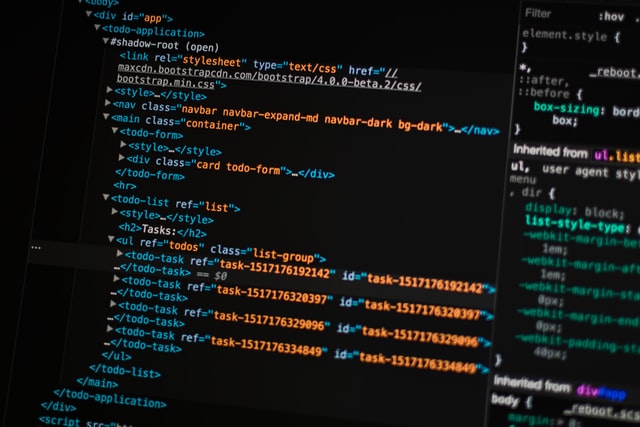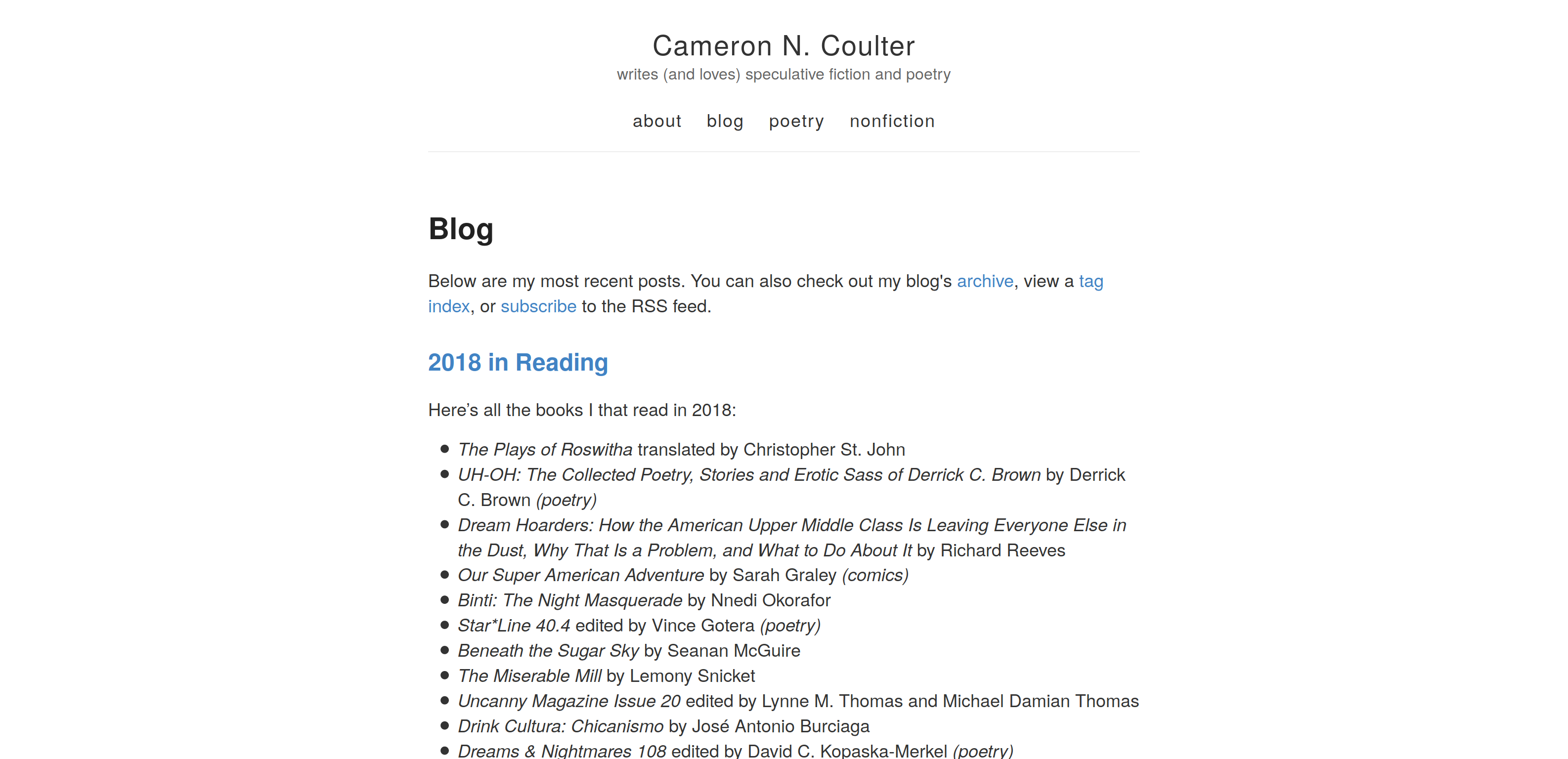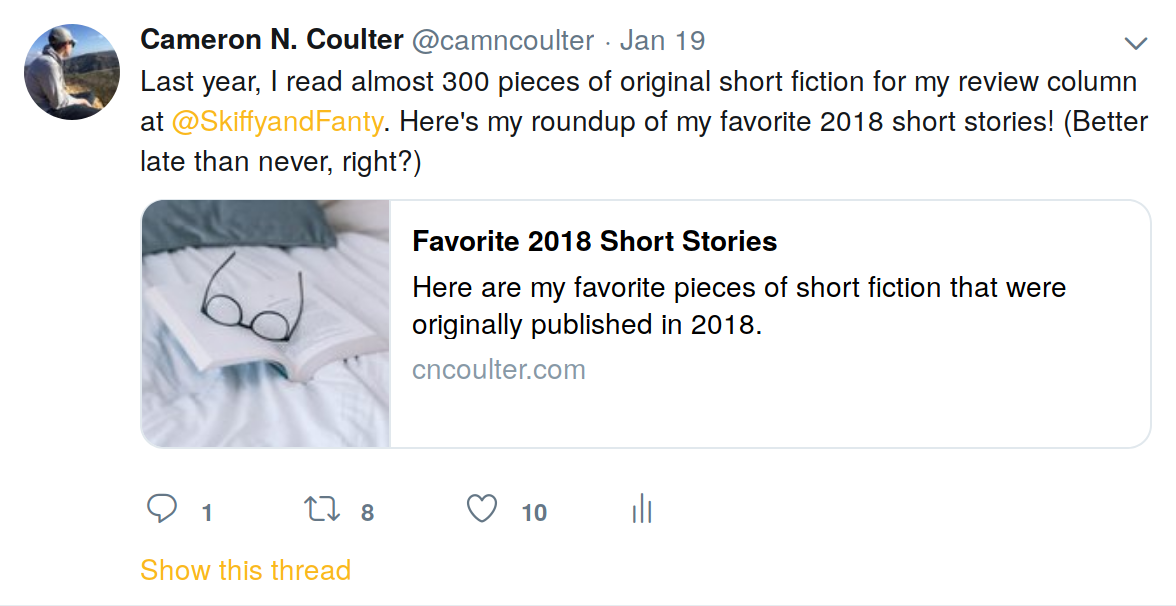Website Redesign
Over the last two months, I taught myself the Bootstrap framework for web development, and I used it to redesign my website/blog.

Introduction
Over the last two months, I taught myself the Bootstrap framework for web development, and I used it to redesign my website/blog. This project was on my to-do list since April 2017, and I’m glad that I had the chance to get it done this season. The blog looks much better now.

Bootstrap
Bootstrap is a fabulous tool, and I think it should be taught to beginners right alongside HTML and CSS because if you want to do some basic web design-y things (like add a navbar), it’s actually quite a bit of work if you’re just using HTML and CSS, but with Bootstrap, it’s a cinch. And it’ll look good. The basics of Bootstrap aren’t much more complicated than the basics of HTML, and Bootstrap has another significant advantage: Bootstrap is a tool for developing responsive websites, websites that shift their layout depending on whether the reader is accessing the site on a desktop, tablet, or phone.
It also turns out that Bootstrap integrates really well with Jekyll, the platform that powers my blog, which made this redesign quite a bit of fun.
What’s New
Thanks to Bootstrap, my website/blog is now responsive, so it’ll look nice whether you access it on your desktop or your phone.
I added color and photos to the blog, simple design basics that I had neglected before. They do a lot of good, go figure.
I’ve added support for both categories and tags.
I also added support for Twitter cards, so that when I post blog links on Twitter, Twitter adds a nice little box with the post’s featured image and an excerpt. Like so:

And, of course, in the process of redesigning the website, I also made lots of other small typographical and design edits. All in all, I’ve very happy with the site now.
Forking My Website/Blog
This website/blog is powered by Jekyll and hosted for free on Github thanks to Github Pages.
It’s a pretty sweet setup because it means: I don’t pay hosting fees; the website is super easy to backup; it’s easy to host elsewhere if I decide to ditch Github. Also, I was able to set up a custom email and email forwarding for free through Google Domains.
If you’re looking to set up your own website/blog, you’re welcome to fork my website on Github and use it for yourself. In an earlier post I reflected on the benefits of using Jekyll and Github Pages over a platform like WordPress, so check out that post for more details. It’s a little complicated, but if you’re tech-savvy, you can probably figure it out okay. Feel free to shoot me an email if you’ve got any questions.